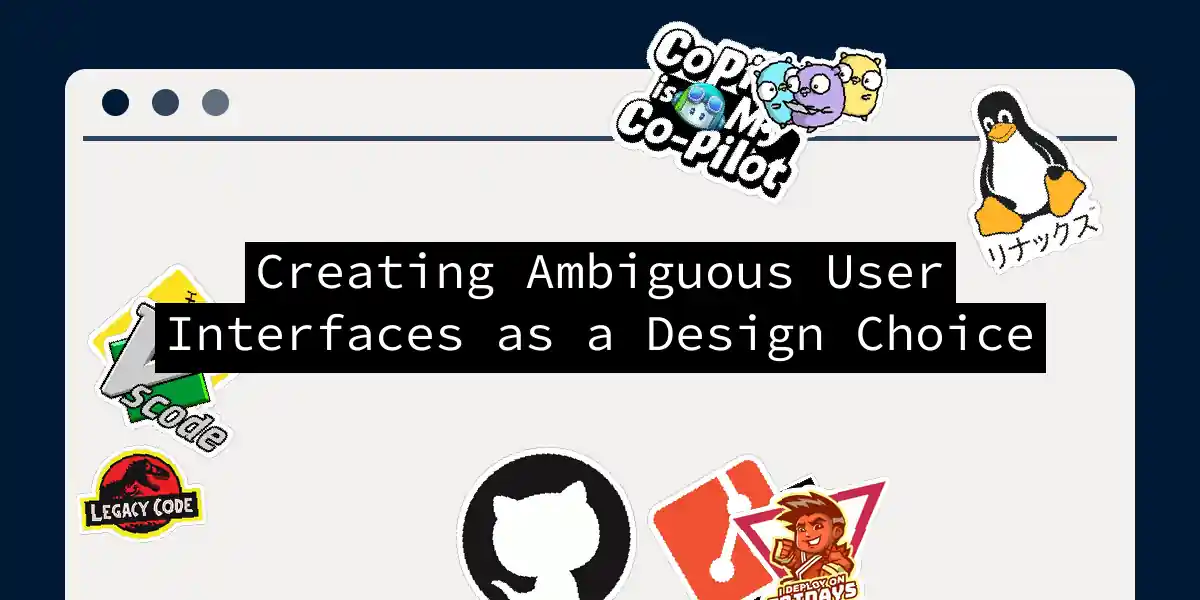Introduction to Ambiguity in Design
When we think about user interface design, clarity and precision are often at the forefront of our minds. However, there’s a fascinating aspect of design that challenges this conventional wisdom: ambiguity. Designing with ambiguity in mind can be a deliberate choice, one that encourages exploration, creativity, and even user engagement. In this article, we’ll delve into the concept of creating ambiguous user interfaces, why it might be beneficial, and how to implement it effectively.
The Nature of Ambiguity
Ambiguity in design refers to the intentional lack of clarity or specificity in certain elements of a user interface. This can manifest in various forms, such as vague instructions, open-ended interactions, or unconventional layouts. While it might seem counterintuitive to introduce ambiguity, it can foster a more dynamic and engaging user experience.
Benefits of Ambiguous Design
- Encourages Exploration: Ambiguity can prompt users to explore and discover features on their own, leading to a more immersive experience.
- Fosters Creativity: By not spelling everything out, users are encouraged to think creatively about how to use the interface.
- Reduces Predictability: An ambiguous design can make the interaction feel less predictable and more exciting.
Challenges of Ambiguous Design
- User Frustration: Ambiguity can lead to confusion and frustration if not balanced correctly.
- Learning Curve: Users may need time to adjust to unconventional interfaces.
- Accessibility Concerns: Ambiguity can exacerbate accessibility issues if not designed with accessibility in mind.
Implementing Ambiguous Design
To create an ambiguous user interface effectively, consider the following strategies:
1. Gradual Revelation
Implement features that reveal themselves gradually as the user interacts with the interface. This can be achieved through animations, tooltips, or subtle visual cues.
2. Open-Ended Interactions
Design interactions that allow users to explore different paths or outcomes. For example, a game-like interface where users can experiment with different combinations to achieve a goal.
3. Feedback Loops
Use feedback loops to guide users without explicitly telling them what to do. This can be done through subtle animations or sound effects that respond to user actions.
4. User Testing
Conduct extensive user testing to ensure that the ambiguity is engaging rather than frustrating. Gather feedback to refine the design.
Example: Implementing a Forgiving Format
A “forgiving format” is a design pattern that accommodates user mistakes by correcting them automatically or providing multiple paths to a solution. This can be seen as a form of ambiguity, where the system is flexible and adaptable to user input.
Case Study: Ambiguous Typography
Typography can also be used to introduce ambiguity. For instance, using decorative fonts in unexpected places can create a sense of intrigue. However, it’s crucial to balance aesthetics with readability and accessibility.
Best Practices for Typography
- Limit Font Usage: Use no more than three fonts to maintain consistency.
- Contrast and Hierarchy: Use varying font sizes and styles to create visual hierarchy.
- Accessibility: Ensure that fonts are legible and accessible for all users.
Conclusion
Creating ambiguous user interfaces is a bold design choice that can lead to innovative and engaging experiences. However, it requires careful consideration of user needs and extensive testing to ensure that the ambiguity is beneficial rather than frustrating. By embracing ambiguity, designers can push the boundaries of what is possible in user interface design.
As we continue to explore the possibilities of ambiguous design, it’s essential to remember that the goal is not to confuse but to inspire. With the right balance of creativity and clarity, ambiguous interfaces can become a hallmark of innovative design. So, the next time you’re designing a user interface, consider leaving a little room for mystery—it might just lead to something extraordinary.
